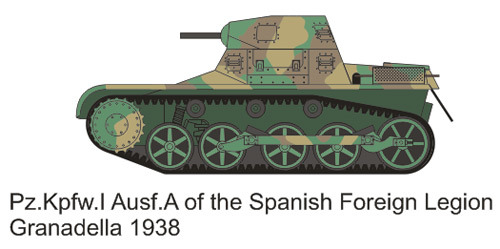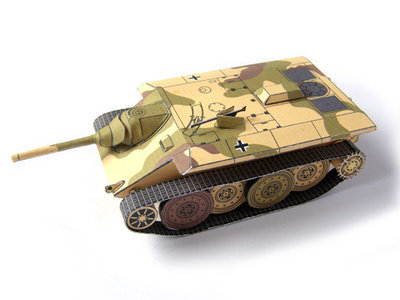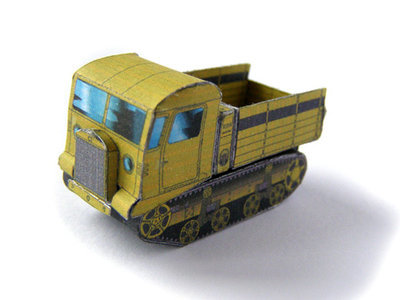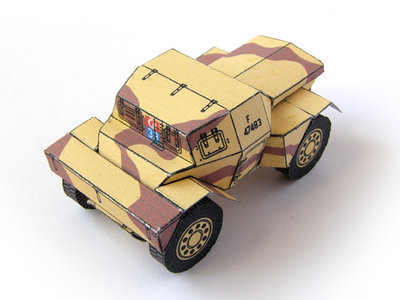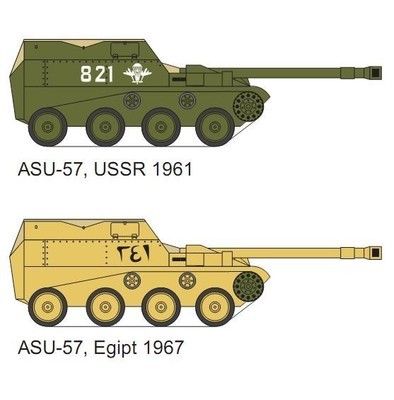1/72 PzKpfw I Ausf.A (Spanish livery)
Designed primarily as a training, and later a light combat vehicle, this version was accepted into service after testing in 1934. Although these tanks were referred to as the La S and LKA well beyond the start of production, its official designation, assigned in 1938, was Panzerkampfwagen I Ausführung. A ('model A' or, more accurately, 'batch A'). The first fifteen tanks, produced between February and March 1934, did not include a rotating turret and were used for crew training. Following these, production was switched to the combat version of the tank, which is the basis for this paper model. The Ausf. A was under-armored, with steel plate of only 13 millimeters (0.51 in) at its thickest. The tank had several design flaws, including suspension problems which made the vehicle pitch at high speeds, and engine overheating. The driver was positioned inside the chassis and used conventional steering levers to control the tank, while the commander was positioned in the turret where he also acted as gunner. The two crewmen could communicate by means of voice tube. Machine gun ammunition was stowed in five bins, containing various numbers of 25-round magazines. Estimates of total production range from 300 to as many as 1500+.
The Ausf A, or Panzer IA, saw combat action during the Spanish Civil War. Over 1500 of these vehicles took part in the Polish Campaign, and in steadily decreasing numbers they saw action in France, Norway, Africa, Greece, the Balkans, and during the opening months of the invasion of the Soviet Union.
